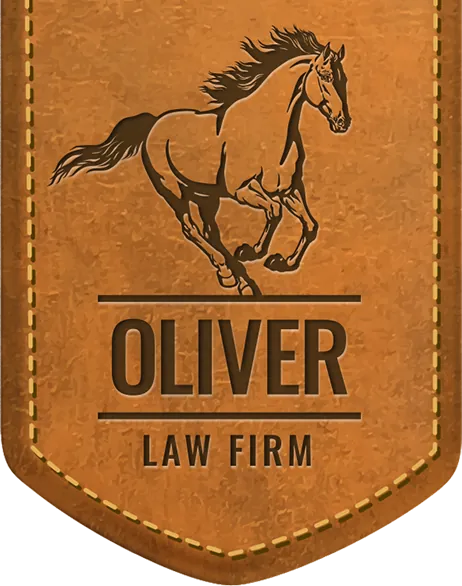What a feat reading this book was! It’s practically a text book for anyone who wants to know. Beware; this will be a long memo.
Why Visuals?
- Visuals show things that language cannot
- Visuals increase people’s attention and comprehension
- Visuals create a dramatic affect that words just cannot produce
Put yourself in the Jury’s shoes. We forget that we have been immersed in this case for possibly 2 or 3 years. Of course we know it in and out. But imagine learning all of the details you have spent 3 years acquiring in 3-10 days?
So not only is the Jury being bombarded with a ridiculous amount of facts accumulated over a large amount of time, in many cases, all of these facts are presented entirely through talking. Attorneys overload the left side of their brain with facts, and do not balance it by adding in visuals to stimulate the right side of their brains, resulting in “in one ear out the other” most of the time.
“What a jury can see, a jury can understand”
To Begin….
- Write the story of what happened in present tense, simple sentences. Frank is AWESOME at doing this. So get his help.
- Read each sentence and visualize a picture for each sentence.
- Collect Images—and also utilize the expert in developing images to show his opinion best. We learned our lesson the hard way in the Henderson trial. Our experts need to be involved somewhat in this process.
- Go to the scene and take photos.
- Utilize a focus group to get feedback on whether the images or animations picked are the best.
- Edit
Show the Rules/Standards
We do this—these images line our hallways. To take it further, print out the actual excerpt of the “rule” within the policies and procedures provided to us in Discovery and blow it up to show the jury the ACTUAL rule that the Defendant had all along. Show all the rules before demonstrating how the defendant broke them. Like, inspections of trucks should be done while the engine is off. Or whatever their policy states.
Show the Defendant
Have pictures of these dudes. Have pictures of the HUGE Corporation building where their millions of dollars are made. Paint a clear picture to the Jury of how greedy these people are.
Show how the Defendant Broke the Rules
It’s important to show where the rules were broken and if possible, how. For example, in Howell, a picture of yard where the truck pusher spent most of his time or a picture of wherever the inspections have been done. The caption below the picture would be something like “Greg Smith knows that before the trucks are sent on their way, the engine should be inspected/brakes tested by turning the engine off” or something brilliant that Frank writes.
Brainstorming here, if we have an inspection note stating that the breaks were checked—show this note with the person’s signature. The caption would state “And on this day, Greg Smith chooses to sign this inspection note stating that the engine was turned off, when in fact, it was left on”
—Play clips of Laven, 30b6, and Sam stating that inspections were done while engine was on.
And now we have shown the jury one rule that was broken, rather than just stating it to them.
“Let the Jury see for themselves who breaks the rules”
Once you have showed each and every rule that the Defendant broke, go ahead and list them out as bullet points on one slide.
Now it’s time to show how the Defendant’s rule breaking affects our client. This is crucial in building up the jury’s anticipation and attention to the climax of our story. You will be showing your pictures with captions below.
The truck arrives at the yard after having been driven for a long period of time—sometimes 12 hours sometimes 30 hours depending on where he was picking up and dropping off the water. (picture of yard)
Time after time, instead of turning the engine off and inspecting brakes properly, truck pusher Greg Smith chooses to push the trucks out of the yard without proper inspection.
Eastern Tank put trucks on the road that haven’t been turned off for days and days. (pic of eastern tank semi driving down road?)
Greg Smith/Eastern Tank chooses to put unsafe trucks on the road with potentially faulty brakes. (pic of defendant)
On September 24, 2011, Greg Smith fails to properly check the breaks on truck _____ and sends it out of the yard.
(go ahead and list all rules that have been broken/poor choices that were made)
On September 24, 2011, Laven Wood begins his shift, driving truck_____ with deficient brakes.
Laven Wood is driving along Highway ____ at 54 mph. (pic of scene)
Laven Wood is not keeping a proper lookout.
Continue describing every detail to heighten the jury’s emotions.
Laven Wood slams on his brakes but cannot stop because his brakes are deficient. (wouldn’t the sound of brakes screeching be wonderful here?)
Laven Wood runs down Harley, and the Eastern Tank Service truck come to a rest on top of Harley Howell.
The tension in the courtroom will be insane!
“People can’t remember what you say; they remember HOW YOU MAKE THEM FEEL”
Rule/Theme
The rule or the theme establishes the story’s subject.
Panel 1 states the rule. Panel 2 states what happens when the rule is broken.
- Inciting Incident—focuses jury’s attention on the Defendant’s choice or action that violates the rule.
- Standards—educates the jury on the rules and what happens when rules are broken.
- Choices—develop conflict in the story and shows liability.
- Climatic Moments—Shows the harms caused by defendant as a result of their decisions to break rules.
“The way you present a story, both orally and visually, has an enormous
impact on how jurors process information.”
I have about 10 pages of notes from reading that I will skip over so that this memo doesn’t turn into a book itself.
Show the Plaintiff
Our focus so far has been on the Defendant, the rules, painting the picture of how the defendant broke the rules etc. The jury hates the defendant at this point. Now let’s show them how their stupid careless decisions hurt our client, and make them hate the Defendant even more.
Let’s switch to the Cox case.
I imagine a slide before the jury, with the picture of a faceless man in a suit with his arms crossed as if he is annoyed with you. Take that image and beside it, post how the Defendant wronged the plaintiff. Specifically in Cox:
- The Defendant was unfair to Danny and Tamara Cox by developing loop holes in their policies to avoid paying….
- The Defendant was unfair to the Cox’s by not abiding by the insurance contract agreed upon by both parties.
- The Defendant was willfully blind to the state of the Cox’s burned down home and determined it was not a total loss.
I’m just guessing but you get my drift. While you are tearing the defendant down by showing how “unfair” or just plain “bad” the Defendant is, we will build the plaintiff up and begin showing the damages. What did the Defendant’s unfair actions of not paying the claim do to our wonderful Plaintiffs?
- Took away the ability to rent out their basement for pennies to a preacher and his lovely wife. (picture of the preacher and his wife)
- Took away their ability to have a place for their daughter and grandchild to come stay and have family time, or bake cookies in their kitchen. (picture of some family members gathering in the kitchen)
- Took away their ability to have Church Bible studies in their living room. (picture of a few people, one maybe holding a bible and notebook in their arm, at their home)
- Took away their ability to have barbecues in the backyard with their friends. (picture of a party in the backyard)
So while showing the Defendant’s unfairness, we not only show the damages it caused, but also what great people the Cox’s are. The jury is thinking about the Cox’s— “oh they let a poor preacher and his poor wife live basically for free? Oh they have kids and grandkids that come over and bake cookies in the kitchen? Oh they have Bible studies and open their home to others?”
Yeah the Cox’s look like wonderful people here and that dirty insurance company just wants money.
So, like I said earlier, I have about 10 additional pages to the last 10 I mentioned that I could go into, but the highlights are here. There is a mountain more of information to share for another time. Great book, great teaching.
a Free Consultation



